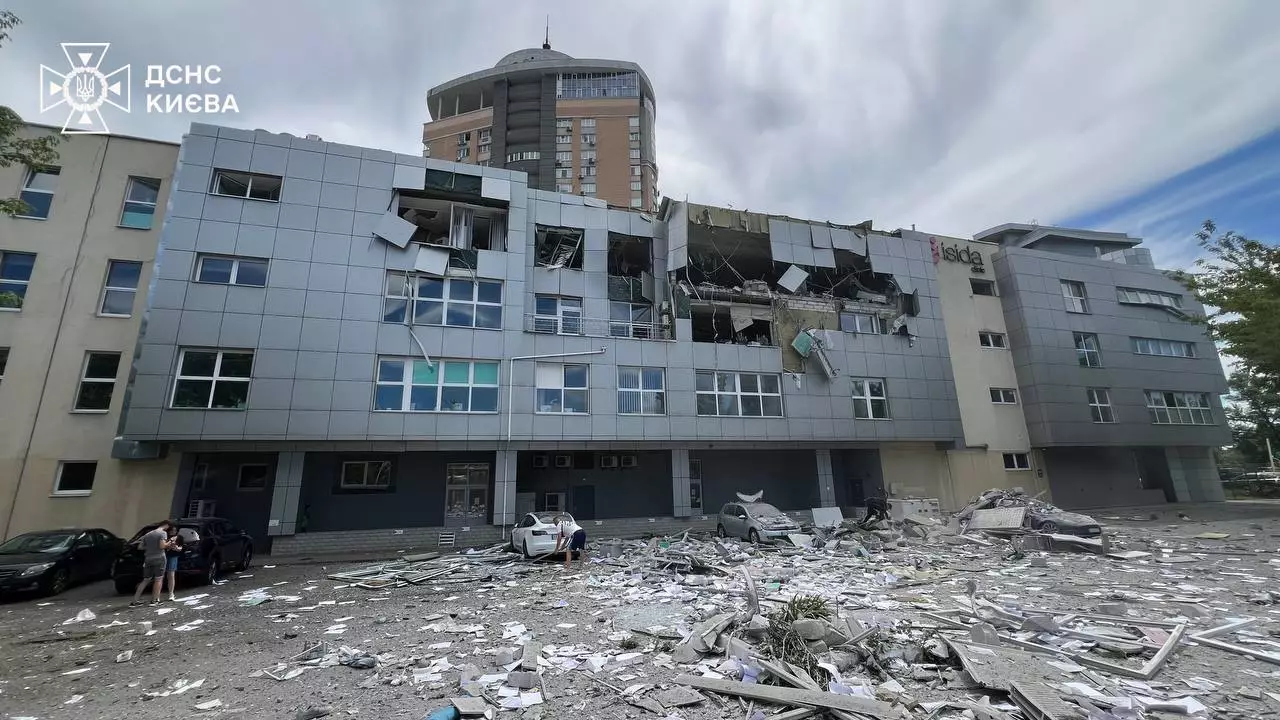Ukrainian hospitals are already experiencing a catastrophic shortage of beds for COVID-19 patients, and medical facilities are not properly provided with medicines and equipment. Therefore, doctors have to choose which patients would receive oxygen to survive and which would die. Back on 3 April, the Verkhovna Rada passed the amendments to the Law of Ukraine “On the State Budget for 2020,” establishing the COVID-19 Response Fund for which UAH 64.7 billion was laid down.
 According to the Ministry of Finance, as of 6 November 2020, UAH 39 billion was already spent from the COVID-19 Response Fund, accounting for 59% of the total sum. At the same time, most of those funds were spent on road repairs instead of healthcare system.
According to the Ministry of Finance, as of 6 November 2020, UAH 39 billion was already spent from the COVID-19 Response Fund, accounting for 59% of the total sum. At the same time, most of those funds were spent on road repairs instead of healthcare system.
According to the Ministry of Finance, the COVID-19 Response Fund’s resources were distributed as follows:
- UAH 32.6 billion – for stimulation of the economy, including UAH 31.5 billion – for road repairs and reconstruction
- UAH 16.3 billion – for healthcare
- UAH 11.7 billion – for social protection
- UAH 2.7 billion – for ensurance of law and order
- UAH 0.1 billion – for education
Funds have already been spent on:
- Road construction – UAH 20.8 billion out of UAH 31.5
- Healthcare – UAH 6.6 billion out of UAH 16.3 billion of planned funds, or 40%
- Purchase of lung ventilators – UAH 42 million out of UAH 100 million
- Maintenance of Health Ministry laboratories and purchase of personal protective equipment for health care workers – UAH 709.7 million out of almost UAH 3 billion
- Increase in benefits and incentives for health care workers – UAH 3.2 billion out of planned UAH 6 billion
- Subvention to local budgets for providing hospitals with oxygen – UAH 571 million transferred
- Social protection – UAH 9.3 billion
Catastrophe in hospitals
The situation with the treatment of COVID-19 patients worsened in Ukraine in late August. For example, in September, 90 patients were treated in the infectious disease unit of the Marinka Town District Branch of the Donetsk Regional Laboratory Centre having only 30 beds. Moreover, the patients had to wait in queue for five hours to see a doctor.
 Medical workers spoke in private conversations and on social media that patients with suspected coronavirus were placed in surgery and cardiovascular care units and all of them were admitted through one and the same reception ward. Due to the staff shortage, nurses from other units were urged to apply for part-time jobs in the infectious disease unit. There was not enough protective equipment – gowns, masks, shields. Everything happened against the background of acute staff shortage. In October, there was a period when the entire infectious disease unit had only one doctor.
Medical workers spoke in private conversations and on social media that patients with suspected coronavirus were placed in surgery and cardiovascular care units and all of them were admitted through one and the same reception ward. Due to the staff shortage, nurses from other units were urged to apply for part-time jobs in the infectious disease unit. There was not enough protective equipment – gowns, masks, shields. Everything happened against the background of acute staff shortage. In October, there was a period when the entire infectious disease unit had only one doctor.
And the day before yesterday, in the Kyiv region, a man died from COVID-19 after he had given an oxygen concentrator to his son who was also infected with coronavirus. Well-known Ukrainian volunteer Dana Yarova told about the incident.
“A father and a son were hospitalised in a district centre. They were given oxygen for 15 minutes a day. The father delivered his 15 minutes over to his son. The father died; the son is still being treated, but I don’t know if he receives an extra 15 minutes of oxygen for his dead father, or not,” Yarova said.
According to the volunteer, patients in hospital are given oxygen concentrators only for 15 minutes a day, since the number of concentrators is very limited, though such a time period is not enough.
“Those, who have not experienced shortness of breath during the coronavirus, will not understand. I had a concentrator, but I still was gripped by a terrible fear that next time I won’t be able to take a breath. I suffocated so much that I could not speak. And I remind you that I had a concentrator. And now imagine a person who suffocates all day long and is allowed to breathe oxygen for 15 minutes only,” Yarova explained.
The situation in other regions of Ukraine is not better. In particular, the Henichesk District Hospital in the Kherson region is currently experiencing great difficulties with oxygen supply. According to the district council, the medical institution lacks oxygen cylinders. To partially relieve the tension, members of the Henichesk District Council allocated at the last session funds for the purchase of 50 cylinders. But hospitals need 150 cylinders, three times as many. After all, one patient needs three cylinders a day for respiratory support, while critically ill patients may need four oxygen cylinders.
Currently, the Nizhyn Town Central Hospital in Chernihiv region is also short of oxygen cylinders – suppliers can provide 70 cylinders per month, while the hospital uses 10 of them per day lately.
In turn, hospitals in the Zakarpattia and Lviv regions already have almost no spare beds: doctors are forced to choose which patients will be given oxygen. The Health Ministry says that funds for the purchase of oxygen have been allocated this week and transferred to the regions. Therefore, the local government is already responsible for oxygen supplies.
 In addition, the sanitary conditions in Ukrainian hospitals raise many questions. For example, Natalia Levandovska, an employee of the Main Department of the Pension Fund of Ukraine in the Ternopil region, notes, “Why does the accident and emergency department, where so many patients with severe COVID-19 are treated, still lack funds to make a normal toilet room, not shared by all men and women in such a terrible condition? There is no warm water, people wash themselves in the toilet room. What are hospital management and local authorities thinking? There is such responsive medical staff and such deplorable conditions.”
In addition, the sanitary conditions in Ukrainian hospitals raise many questions. For example, Natalia Levandovska, an employee of the Main Department of the Pension Fund of Ukraine in the Ternopil region, notes, “Why does the accident and emergency department, where so many patients with severe COVID-19 are treated, still lack funds to make a normal toilet room, not shared by all men and women in such a terrible condition? There is no warm water, people wash themselves in the toilet room. What are hospital management and local authorities thinking? There is such responsive medical staff and such deplorable conditions.”
Why are roads built instead of buying oxygen?
President of Ukraine Volodymyr Zelensky explained that the COVID-19 Response Fund consisted not of money provided separately but of state budget funds that had been previously allocated for various programmes but their implementation was suspended due to the epidemic.
“COVID-19 Response Fund is not specifically printed money or money provided by some of our partners. We are always grateful to them for their support, but we must understand that these are the programmes budgeted for everything: sports, culture , infrastructure, hospitals. We blocked all these programmes, there was a lockdown, but temporarily. We need to restore life, restore and build the country,” the Head of State said.
At the same time, Speaker of the Verkhovna Rada Dmytro Razumkov said that no separate COVID-19 response fund would be set up in Ukraine next year as it was not stipulated in a draft budget for 2021. According to him, Parliament plans only to lay down funds – UAH 2.6 billion – for COVID-19 vaccines for the population, as well as UAH 1 billion to support schools in the fight against the pandemic.
It should be noted that over the first four months of the fight against COVID-19, payments in the amount of UAH 2.3 billion were made from local budgets, while only UAH 911 million were made from the central budget. That is, the local budgets bore 72% of all expenses for the fight against coronavirus. The draft state budget for next year shows that the Government plans to maintain the practice of shifting part of expenditure on combating the epidemic to local budgets, without providing any compensation to municipalities.
It is clear that today Ukraine is not coping with the pandemic, and in winter the country will face chaos in the healthcare system due to a huge number of COVID-19 patients. So, perhaps, officials should not “pave the roads” with billions, but finally spend these funds to improve the healthcare system to save thousands of Ukrainians?
Natalia Tolub






 UA
UA FR
FR DE
DE




